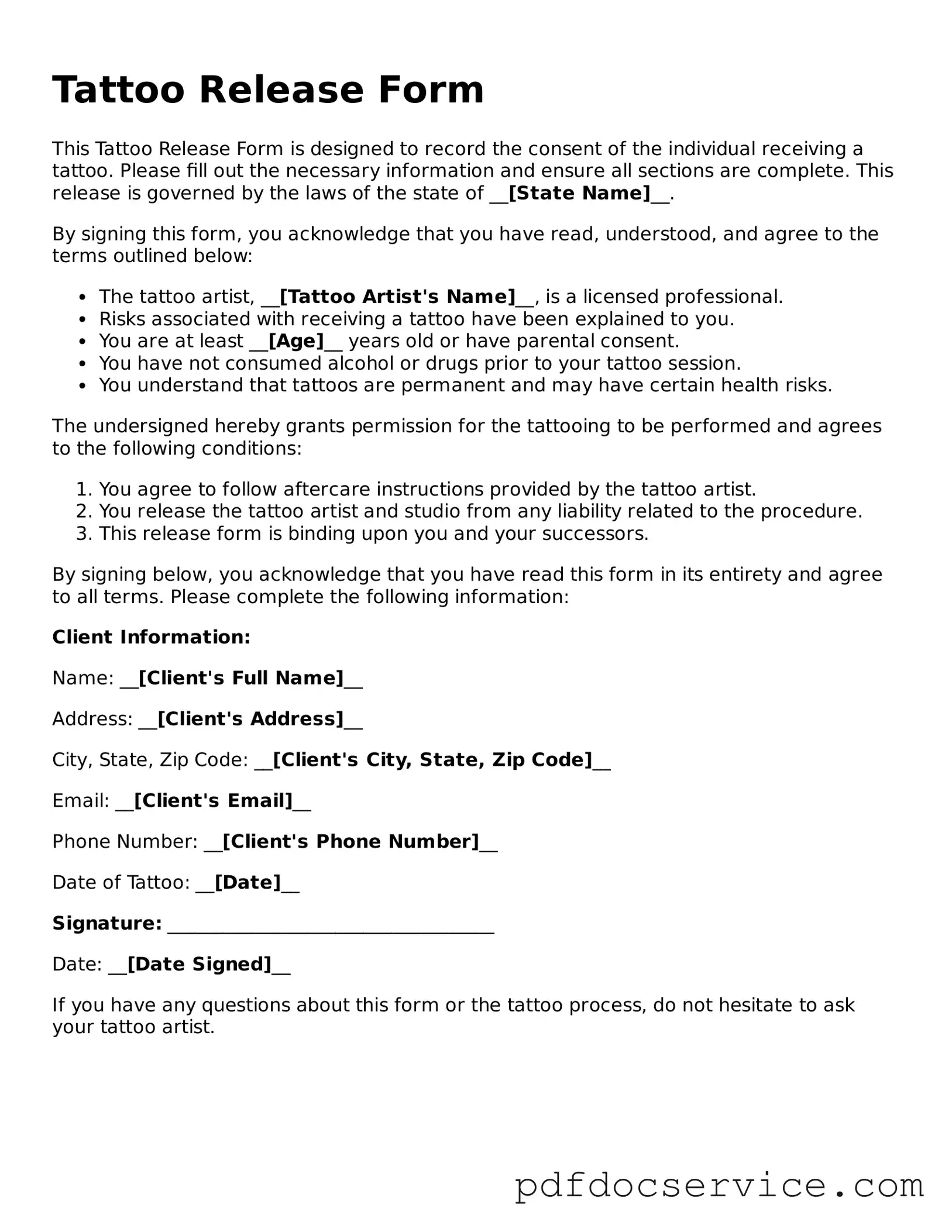A Tattoo Release Form is a legal document that allows a tattoo artist to use images of your tattoo for promotional purposes. By signing this form, you give the artist permission to photograph your tattoo and share those images on their website, social media, or in portfolios. It ensures that both parties understand the rights involved regarding the use of these images.
Signing a Tattoo Release Form protects both you and the tattoo artist. For the artist, it provides legal backing to showcase their work, which can help attract new clients. For you, it clarifies how your tattoo images may be used. If you have concerns about privacy or how your tattoo will be represented, discussing them with the artist before signing is essential.
No, signing the Tattoo Release Form is entirely voluntary. If you prefer not to allow your tattoo to be photographed or used for promotional purposes, you can decline to sign. It's important to communicate your preferences to the artist upfront. They should respect your decision and proceed with your tattoo without any pressure.
If you choose not to sign the Tattoo Release Form, the artist will typically not photograph your tattoo for promotional use. However, they may still document your tattoo for their records. Your tattoo experience will remain unaffected, and you will still receive the same level of service during your appointment.
Can I revoke my consent after signing?
Yes, you can revoke your consent at any time after signing the Tattoo Release Form. However, it’s best to do this in writing and as soon as possible. Keep in mind that if the artist has already used your tattoo images in promotional materials, they may not be able to remove them immediately. Open communication with the artist is key in these situations.
What if I want to use the images of my tattoo?
If you wish to use images of your tattoo, you generally have the right to do so. However, if you signed a release form that grants the artist specific rights to those images, it’s important to review the terms. You may need to discuss any intended use with the artist to avoid any potential conflicts.
Yes, individuals under the age of 18 typically require parental or guardian consent to sign a Tattoo Release Form. Many tattoo studios have specific policies regarding minors, so it’s advisable to check with the studio beforehand. Parents or guardians should be present during the signing process to ensure that all legal requirements are met.
